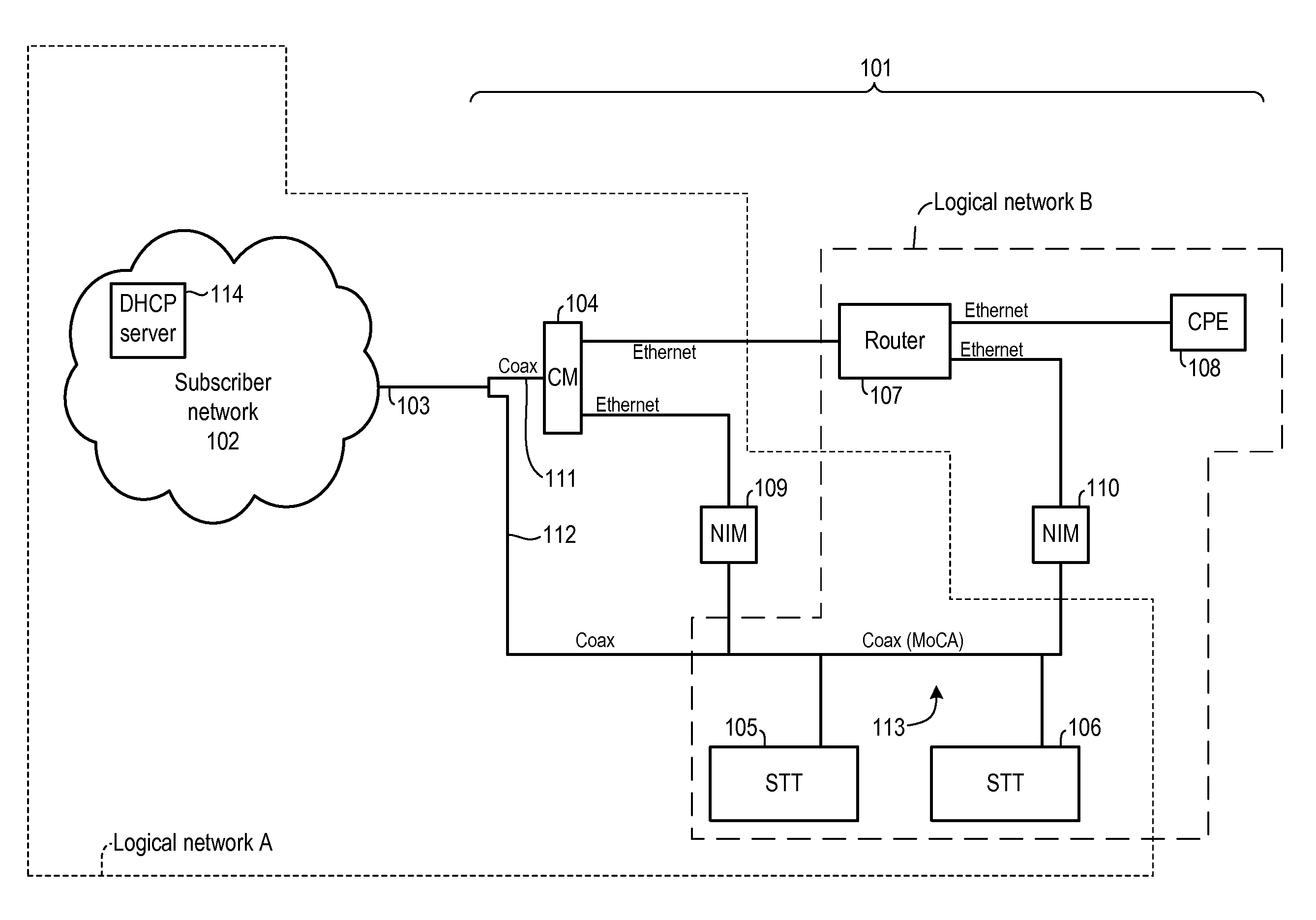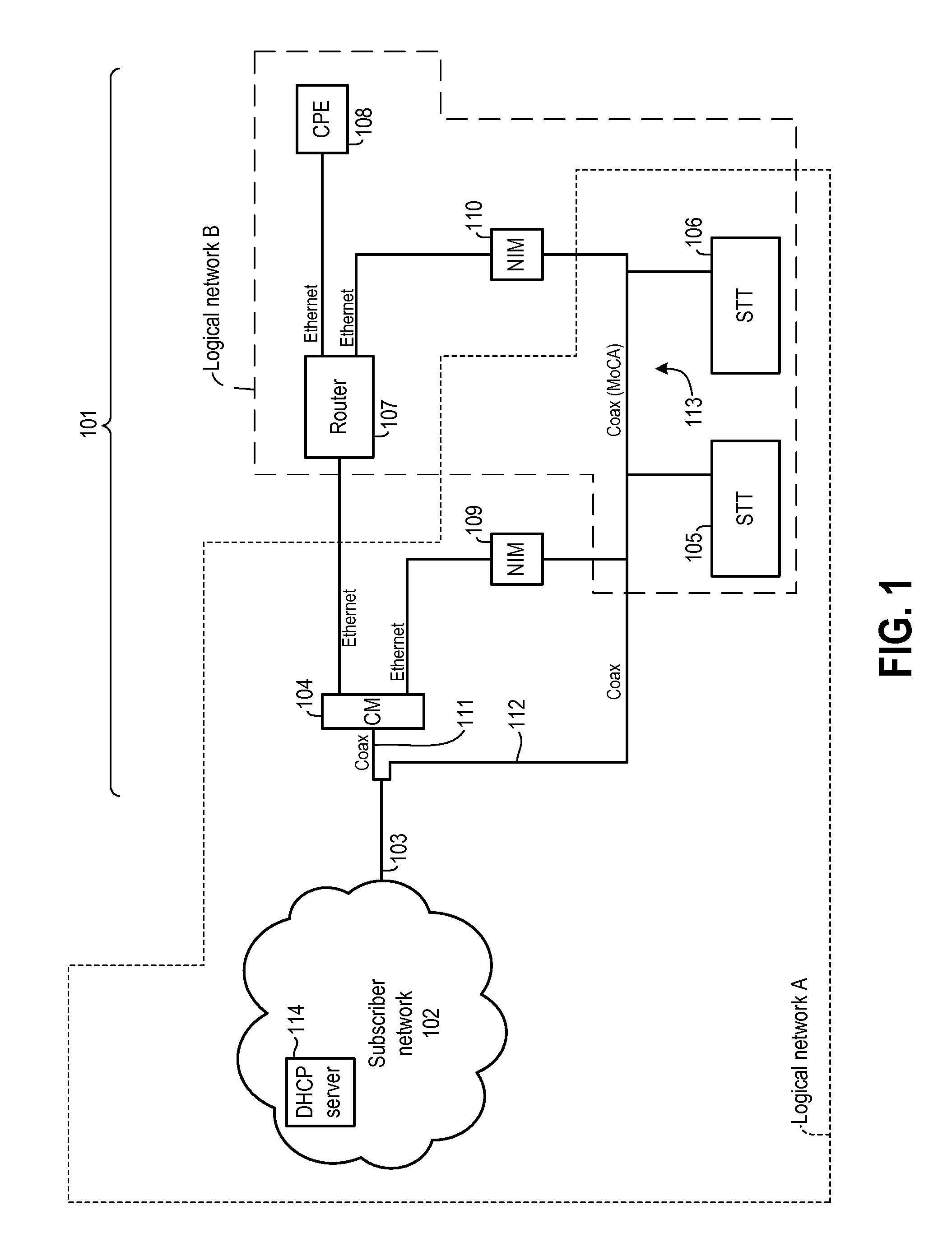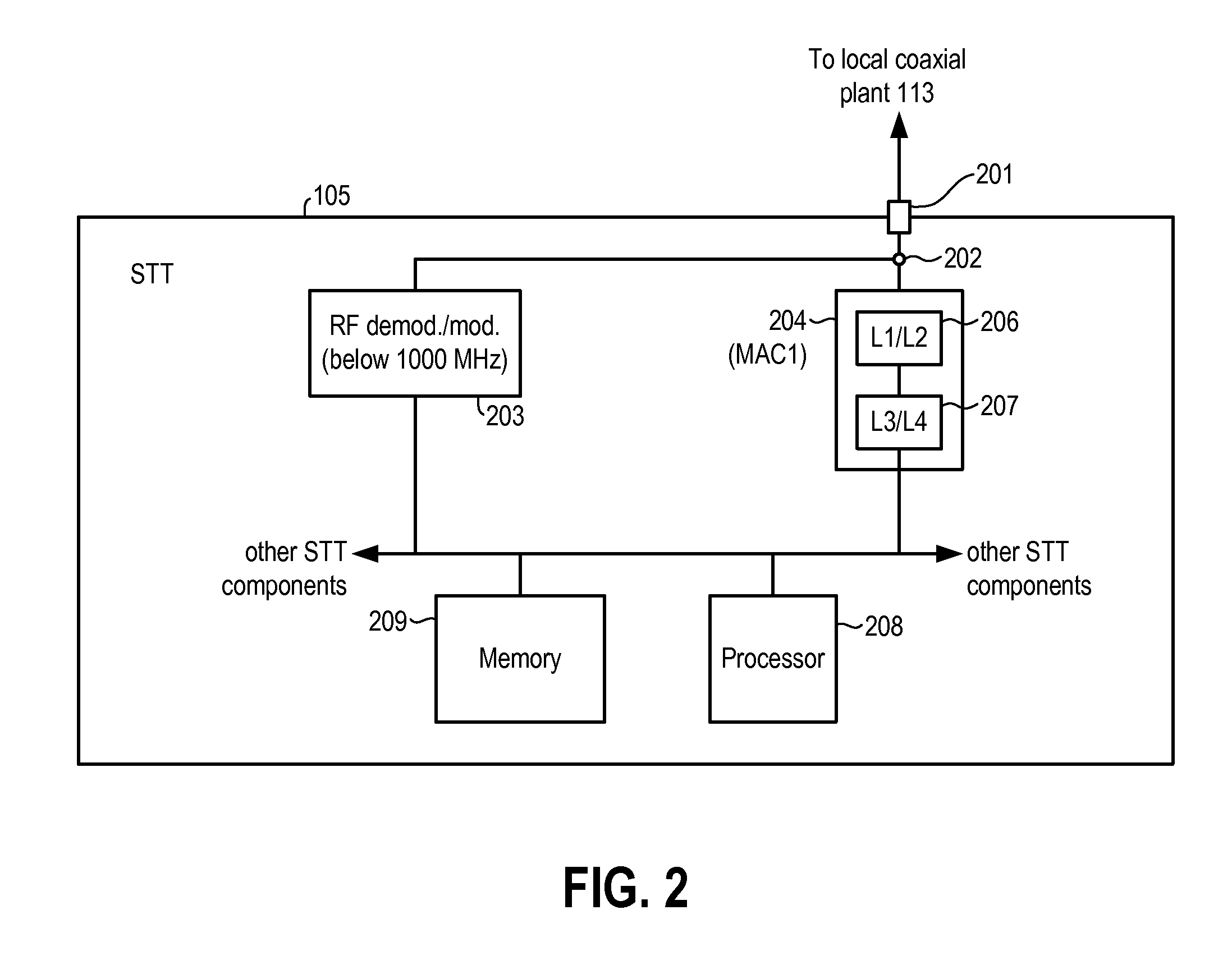Communication Terminal With Multiple Virtual Network Interfaces
a communication terminal and network interface technology, applied in multiplex communication, time-division multiplex, electrical equipment, etc., can solve the problems of head end that is no longer able to receive upstream signals from certain stts, unable to output enough upstream rf power to effectively communicate with the head end, and may have difficulty polling the s
- Summary
- Abstract
- Description
- Claims
- Application Information
AI Technical Summary
Benefits of technology
Problems solved by technology
Method used
Image
Examples
Embodiment Construction
As used herein, and as the context requires, a “network” can be a logical or a physical network (or both). A physical network includes physically separate devices that communicate with each other across one or more types of communication media. A communication medium can be wired (e.g., coaxial cable, optical fiber, electrical conductor) or non wired (e.g., wireless radio communications through free space). A logical network includes devices that communicate across one or more types of communication media, but where all of those devices have an address recognized by one or more other devices in the same logical network. Two different logical networks can use the same communication medium (or media) and addressing protocol (e.g., internet protocol (IP) addresses). However, devices in a first of those logical networks may have addresses that are valid in the first logical network but not in a second of the logical networks. Similarly, devices in the second logical network may have add...
PUM
 Login to View More
Login to View More Abstract
Description
Claims
Application Information
 Login to View More
Login to View More - R&D
- Intellectual Property
- Life Sciences
- Materials
- Tech Scout
- Unparalleled Data Quality
- Higher Quality Content
- 60% Fewer Hallucinations
Browse by: Latest US Patents, China's latest patents, Technical Efficacy Thesaurus, Application Domain, Technology Topic, Popular Technical Reports.
© 2025 PatSnap. All rights reserved.Legal|Privacy policy|Modern Slavery Act Transparency Statement|Sitemap|About US| Contact US: help@patsnap.com



